Jet lag hits different when you’re staring at Akihabara’s electric madness at 10 PM. I’d been awake for… what, 22 hours? But there I was, standing in the rain with my camera, watching those neon reflections dance on wet asphalt. My first mistake? Thinking I’d just grab a quick konbini dinner and crash.
Nope.
Tokyo doesn’t let you sleep on night one. The white van in the photo was blasting some J-pop I couldn’t identify, businessmen were stumbling out of izakayas and I just stood there like an idiot, rain soaking through my jacket, thinking “this is it, this is the Japan everyone warns you about.” Not the polite bows and cherry blossoms from travel blogs. Raw. Loud. Unapologetic.
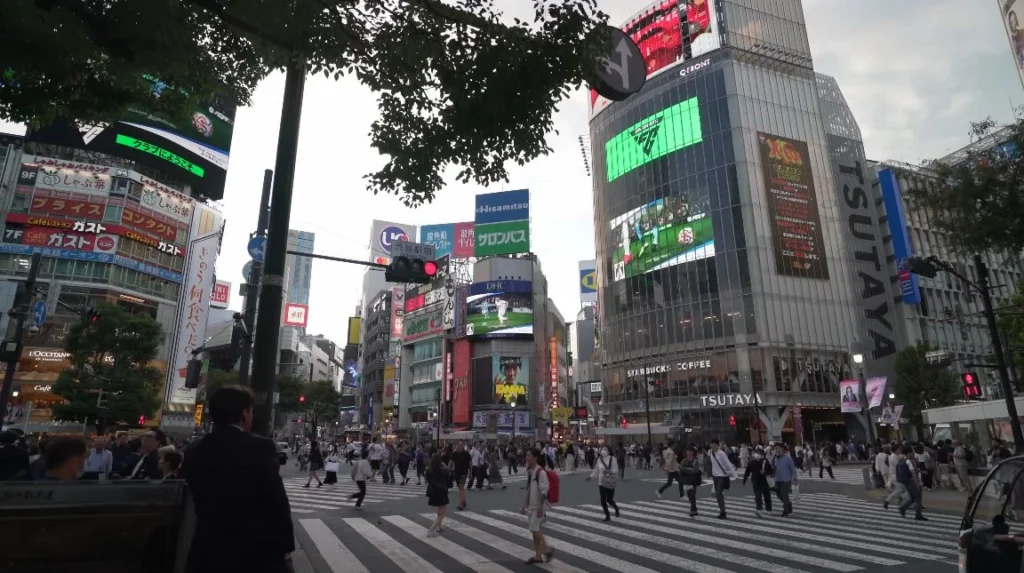
Three nights later at Shibuya crossing and I’d learned to surf the human waves. You know what nobody tells you? The crossing isn’t impressive from ground level. It’s just… people. Hundreds of them, sure, but when you’re IN it, you’re too busy not getting trampled to appreciate the choreography. TSUTAYA’s giant screens were advertising something about a new drama series. A girl next to me was eating takoyaki while walking (huge cultural no-no, but she didn’t care).
The real Tokyo revealed itself in these contradictions.
Quick Urban Survival Notes I Scribbled:
- Doutor Coffee becomes your best friend.
- Those blue lane markings on streets? For blind pedestrians. Don’t stand on them.
- Vending machines every 30 meters isn’t an exaggeration
- My backpack made me look like every other lost tourist.
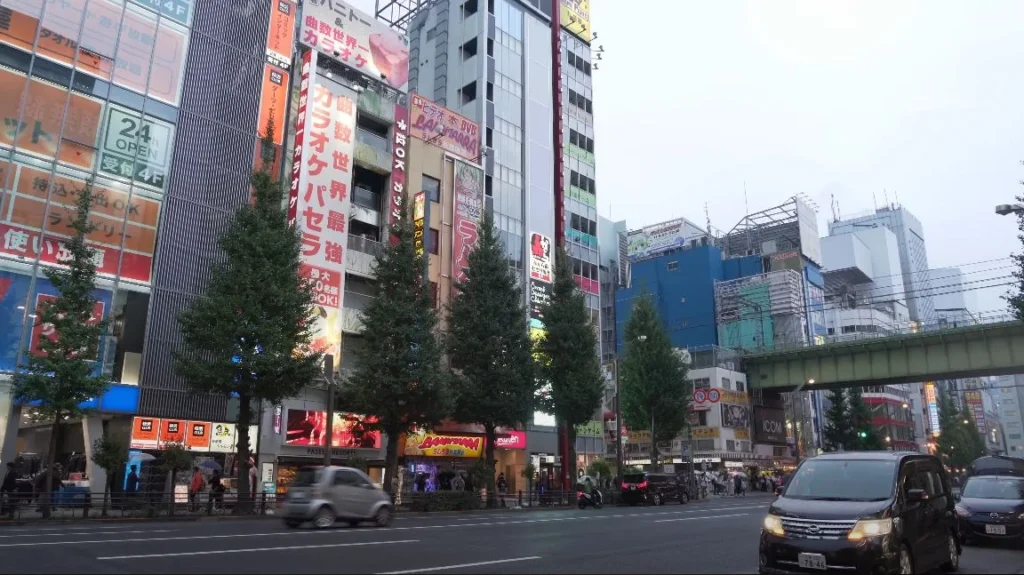
By day, the city transforms. Those same streets that pulsed with neon turn into this weird mix of salarymen, construction crews and elderly ladies with perfect posture pulling shopping carts. The elevated highways slice through everything—urban planning gone vertical. I spent an entire morning just walking under these concrete ribbons, listening to the train rumble overhead every 3 minutes.
Markets, Matcha and My Terrible Japanese
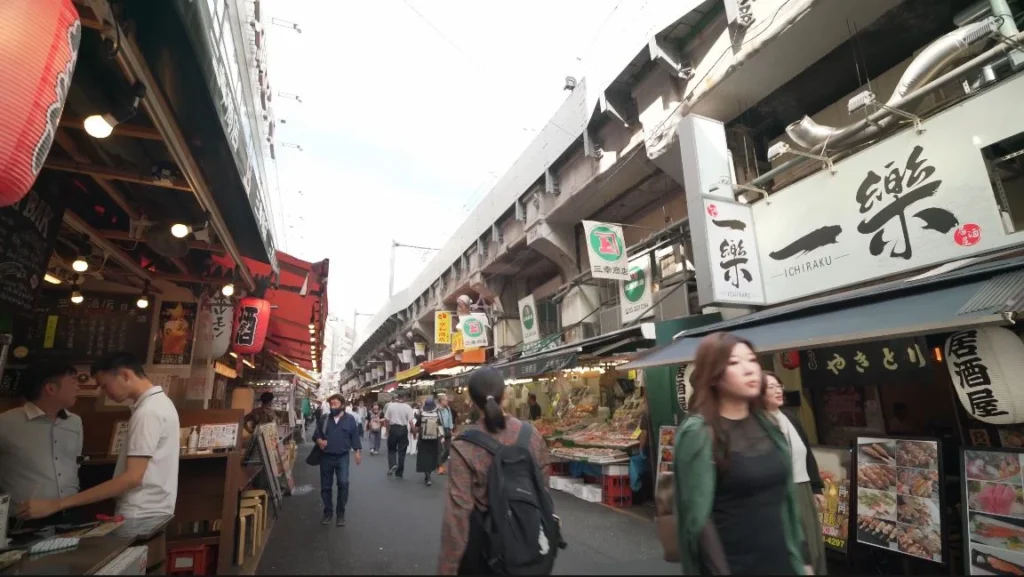
Ameyoko market. Under the Yamanote line tracks. This is where my Japanese completely failed me.
“Ikura desu ka?” I asked, pointing at some dried squid. The vendor rattled off numbers so fast I just handed him a 5000 yen note and hoped for the best. Got 3200 back. Still don’t know if I got scammed.
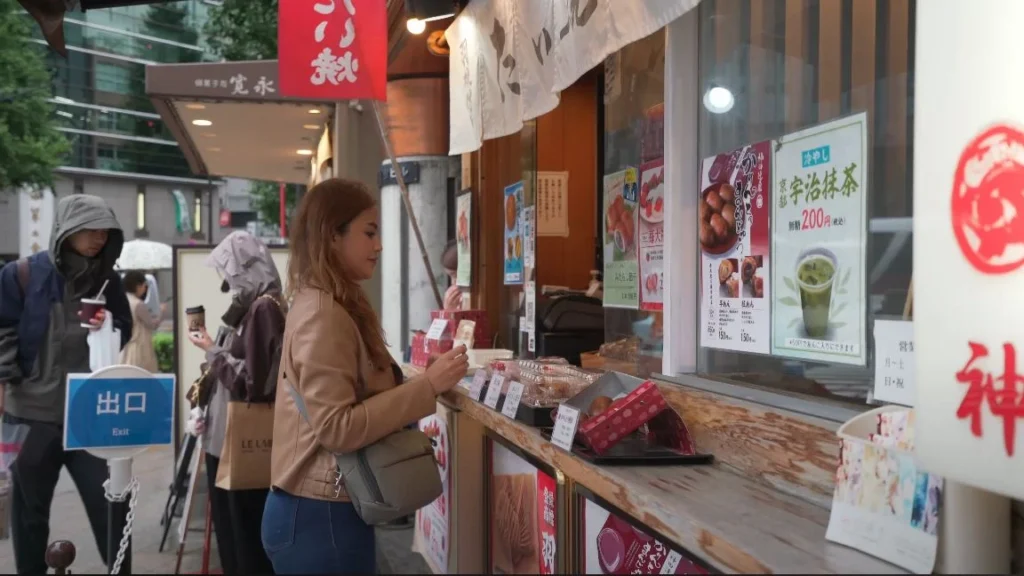
Two weeks in, found myself at this tiny matcha stand in what I think was Asakusa (honestly, the neighborhoods blur together). The lady running it? Maybe 70 years old, moved like she was 30. She watched me fumble with my order, then just started making something without asking.
Best matcha soft serve I’ve ever had. ¥200.
Sometimes language doesn’t matter.
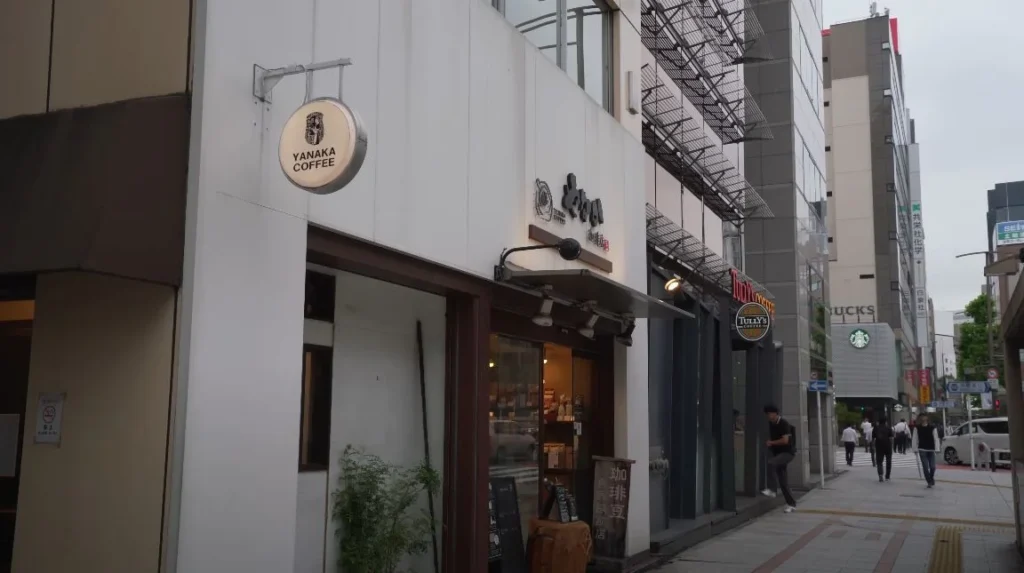
Yanaka district became my escape from the tourist circuit. Yanaka Coffee, tucked between a pharmacy and a ramen joint. The barista spoke perfect English but pretended not to for the first three visits. On day four, he suddenly goes, “The usual?” in a perfect American accent. Turns out he lived in Portland for five years. We both laughed. I kept coming back.
Food Truths Nobody Prepared Me For:
| What I Expected | What I Got |
| Sushi every day | Convenience store rice balls at 2 AM |
| Elegant kaiseki dining | Standing ramen bars where you slurp and run |
| Matcha everything | Coffee. So much coffee. |
| Small portions | Food comas from ¥500 lunch sets |
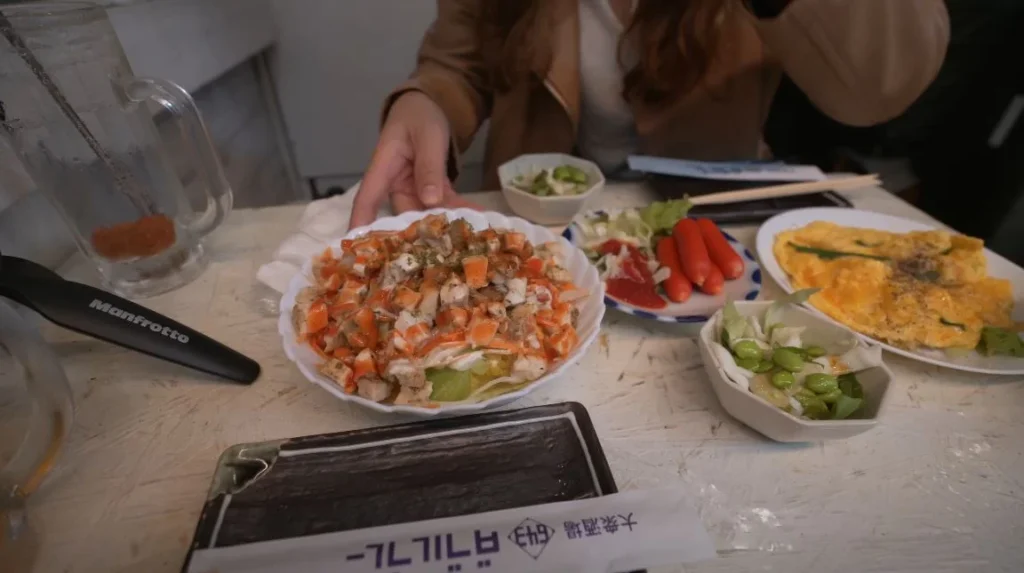
That meal in the photo? Random family restaurant I stumbled into because it was raining. The menu had pictures (thank god), but also Korean text mixed with Japanese. Pointed at something colorful. Got a salad with ingredients I still can’t identify, something that might’ve been octopus and an omelet that changed my life. Total bill: ¥980.
Mount Asama: When Tokyo Kids Meet Real Mountains
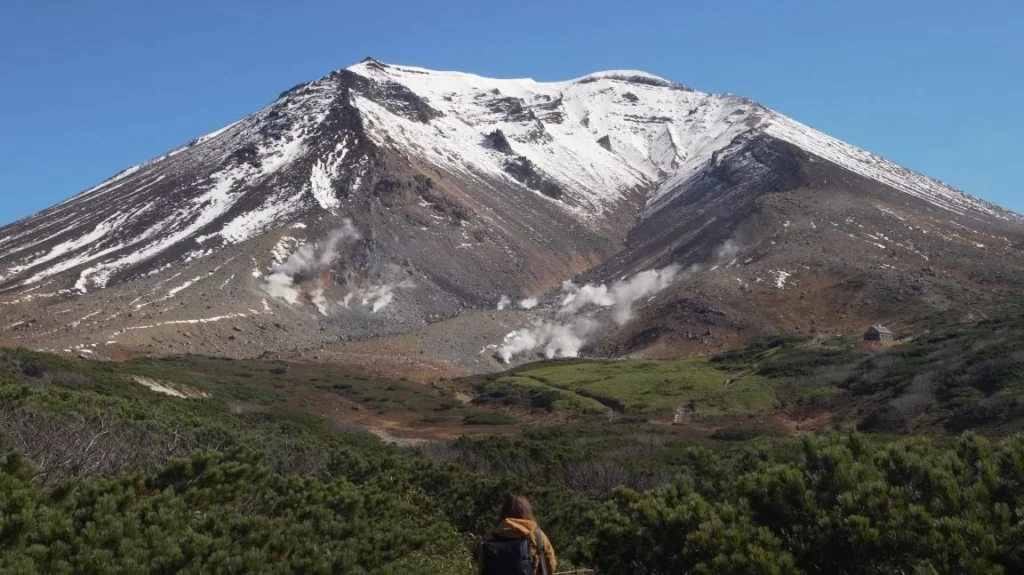
Four hours on local trains from Tokyo (should’ve taken the shinkansen but I’m cheap) and suddenly you’re on Mars. Mt. Asama doesn’t mess around. Active volcano, they said. “Safe” to visit, they said. That steam in the photo? That’s sulfur dioxide mixing with water vapor. My lungs knew it immediately.
Met a group of university students from Waseda up there. They had proper hiking gear. I had sneakers and optimism. They adopted me for the day, shared their onigiri, taught me curse words in Kansai dialect.
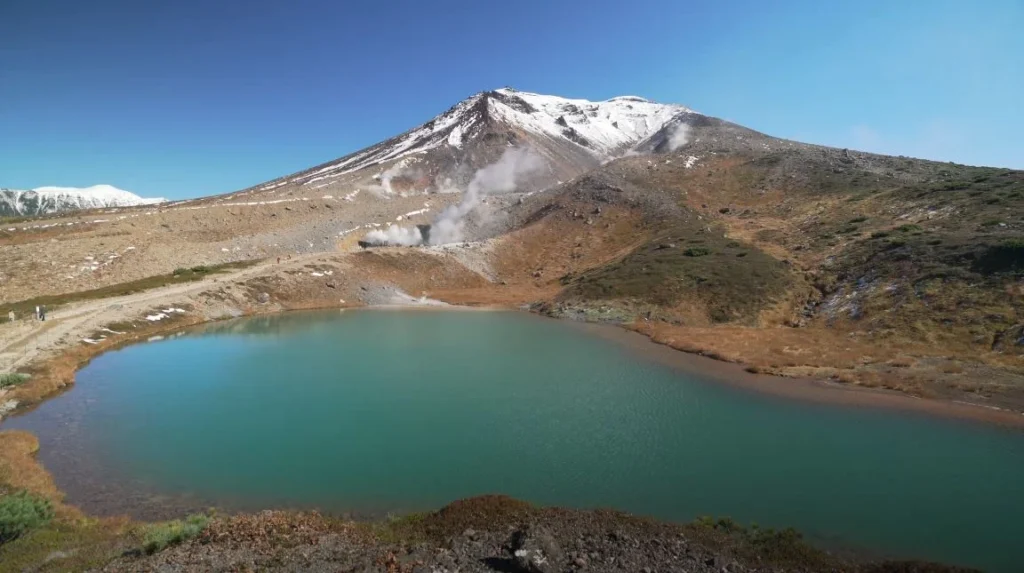
The crater lake doesn’t look real. That blue? It’s minerals and sulfur creating something that shouldn’t exist. The students told me local legends about demons living in the water. Standing there, wind trying to knock you sideways, sulfur stinging your nose, you almost believe it. One of them, Takeshi, said his grandfather claims to have seen lights coming from the lake at night in the 1960s.
“Probably just gases,” he said. Then quieter: “Probably.”
The temperature dropped 15 degrees between the parking area and the crater rim. Nobody warns you about mountain weather when you’re sweating in Tokyo’s humidity.
Mountain Reality Check:
- Altitude sickness is real at 2,568 meters.
- Those vending machines at the trailhead? Last chance for water.
- “Easy trail” in Japan means something very different than back home.
- My phone died from the cold. In September.
- The bus back down runs exactly twice a day. Miss it and you’re hitchhiking.
Hokkaido Happened (Blue Pond and Brain Freeze)
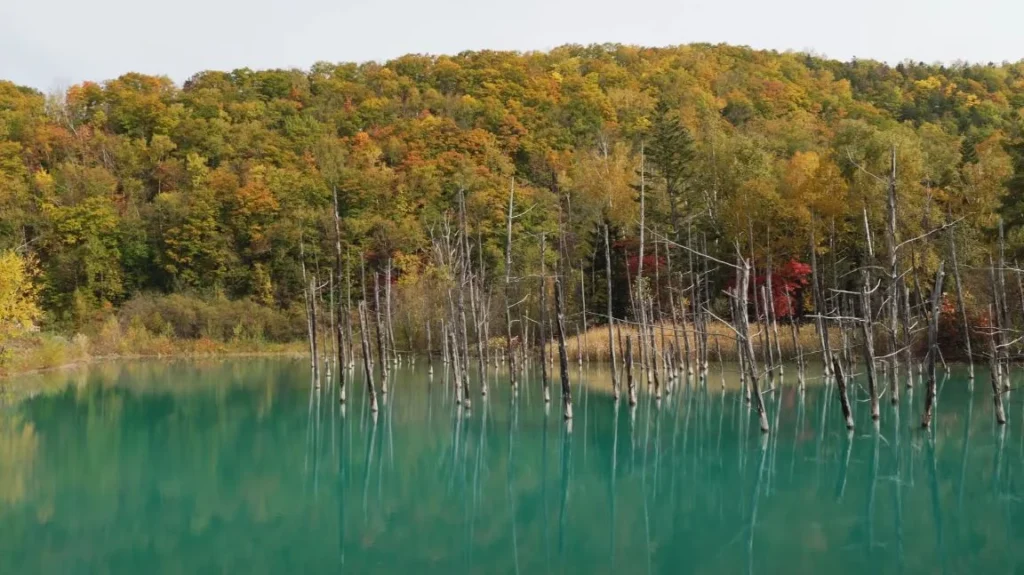
Took the overnight bus to Sapporo. Twelve hours of my knees pressed against the seat in front, some businessman snoring like a chainsaw next to me. Arrived feeling like I’d been put through a pasta maker. But then… Blue Pond.
Apple uses this place as a wallpaper, but photos are lies. The real thing moves. Those dead birch trees sway even when there’s no wind (locals say it’s water current underneath, but it’s creepy). The blue changes every hour—turquoise at noon, almost grey by 4 PM.
A Taiwanese couple asked me to take their photo. We ended up hiking together for three hours. They shared their bubble tea supply. I taught them American curse words. International friendship at its finest.
Sapporo felt like Tokyo’s chill younger brother. Odori Park stretches forever, the TV tower trying so hard to be Tokyo Tower’s mini-me. But here’s what Sapporo has: space. Actual sidewalks where three people can walk side by side. Revolutionary.
The Waterfall That Nearly Killed My Camera
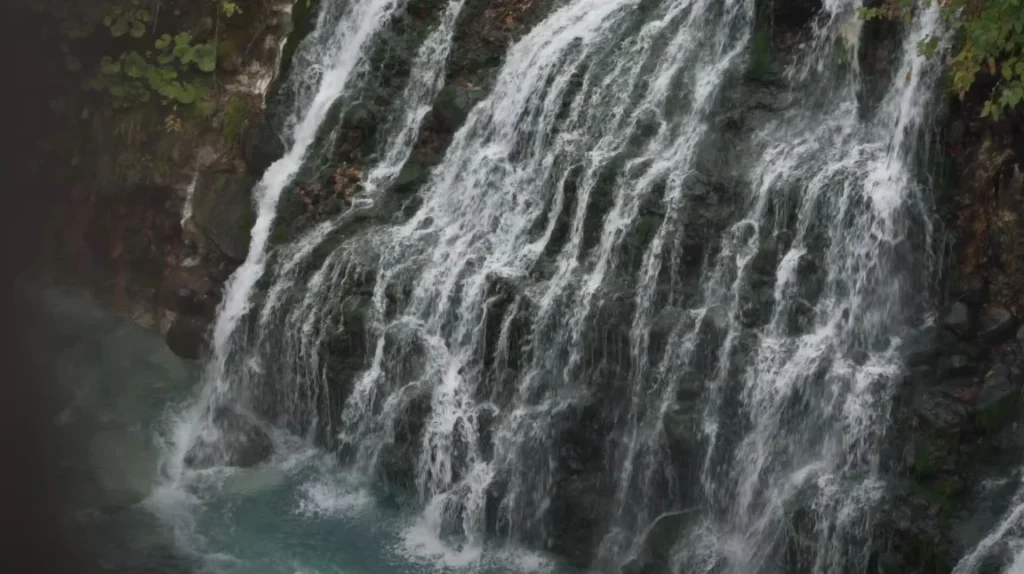
Three days into Hokkaido and I’m chasing waterfalls like some budget TLC song. This one—might’ve been Shirahige Falls, might’ve been Ginga, honestly my notes are just water damage at this point—required a bus, a hitchhike and a 40-minute trek through mud that ate my left shoe.
Worth it? The spray hit my face from 50 meters away. My camera lens fogged instantly. Some German photographer next to me had this massive waterproof housing for his gear. I had a plastic konbini bag and prayer. He looked at my setup, shook his head and handed me his backup rain cover.
“You need this more than me,” he said.
Never got his name. Camera survived. My dignity? Questionable.
The water was that milky blue-white you get from volcanic minerals upstream. A Japanese couple told me if you drink it, you’ll have good fortune. I watched them cup their hands and sip. Twenty minutes later they were arguing about which train to take back. So much for fortune.
Waterfall Wisdom Nobody Shares:
- Those “10-minute walk from parking” signs? Lies. All lies.
- Rocks near waterfalls are slippery. Obviously. I still ate it. Twice.
- That rainbow in the mist everyone photographs? You need to be there at exactly 2 PM.
- Local kids swim in the pools below. Water temperature: hypothermia.
- The best viewing spot is always occupied by someone who’s been there since 5 AM.
Night Views and Existential Crisis
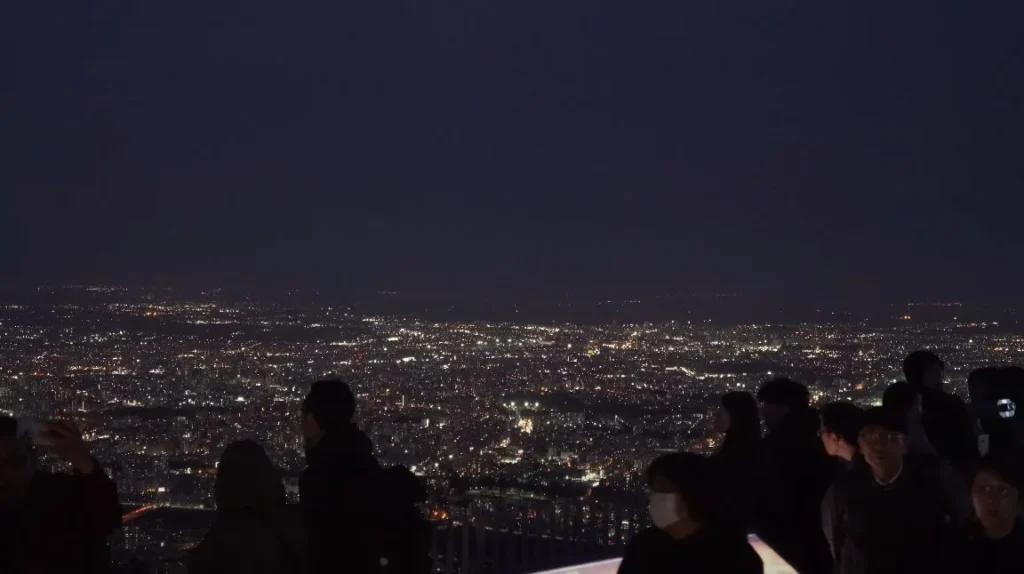
Sapporo at night from Mount Moiwa. Cable car up costs ¥1,700 and the couple behind me complained the entire ride. “Too expensive,” she said. Her Louis Vuitton bag probably cost more than my entire trip.
But then you reach the top and… silence. Even the complainers shut up.
The city spreads out like someone spilled LED lights across black velvet. Couples everywhere doing that thing where they attach padlocks to the railing (there’s probably 10,000 up there now, good luck finding yours again). I sat on a bench next to this old guy who was just… there. Alone. Eating konbini sandwiches and watching the lights.
“Every Tuesday,” he said in broken English when he noticed me staring. “Wife died. She loved the lights.”
We sat there for an hour. Didn’t talk again. Didn’t need to.
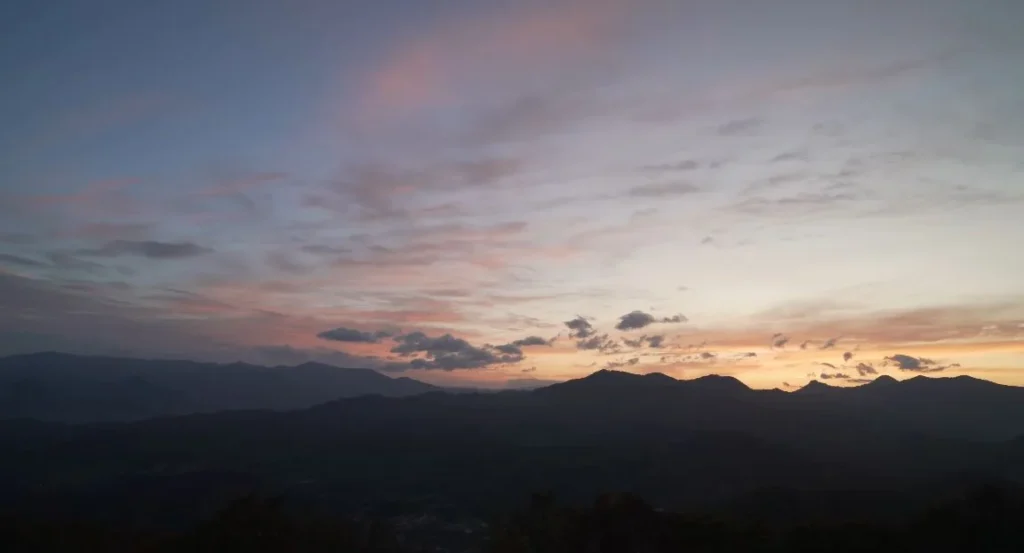
Different night, different mountain. Caught this sunset somewhere between Sapporo and Otaru. The train stopped for some mechanical issue and everyone groaned. I jumped out (conductor yelled at me) and scrambled up this hill.
For five minutes, the world was on fire. Pink, orange, purple—colors that don’t have names. An elderly woman joined me, huffing from the climb. She pulled out the most ancient flip phone I’ve ever seen, took one photo, nodded to herself and walked back down.
The train started moving while I was still up there. Had to wait three hours for the next one. Still worth it.
That Green Bridge and Getting Completely Lost
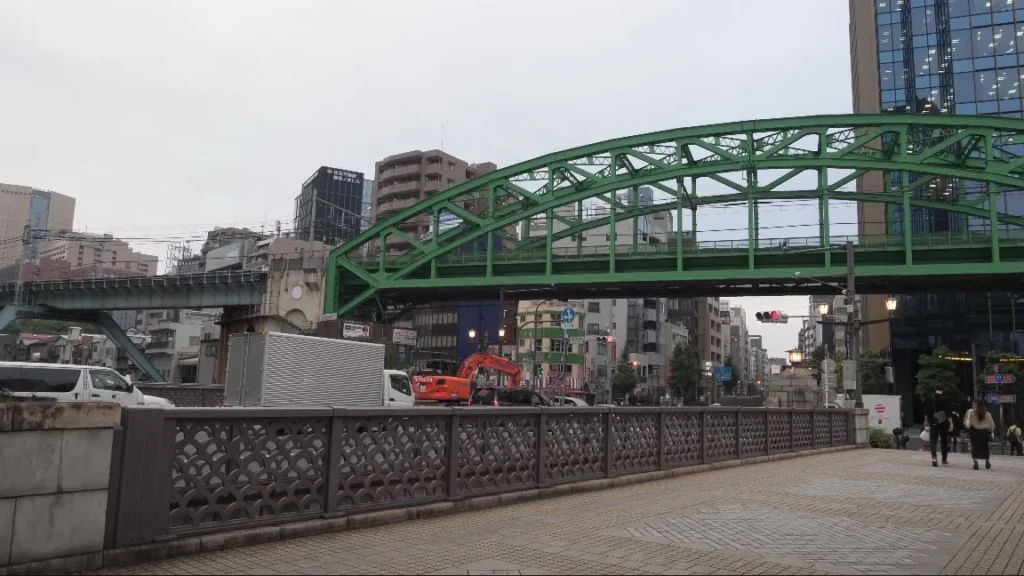
Tokyo again. Last week of the trip. By now I’d given up on maps and just followed interesting looking infrastructure. This green bridge? No idea where it was. Somewhere with both a highway and train line because Tokyo can’t have just one thing when it can have five.
I followed it for two hours.
Ended up in some neighborhood where nobody spoke English, nobody looked like a tourist and the only restaurant was run by this 80-year-old woman who kept force-feeding me pickles. “Eat, eat!” she said, the only English words she knew. I ate twelve different kinds of pickled things. My sodium levels have never recovered.
The Port Where Time Stopped
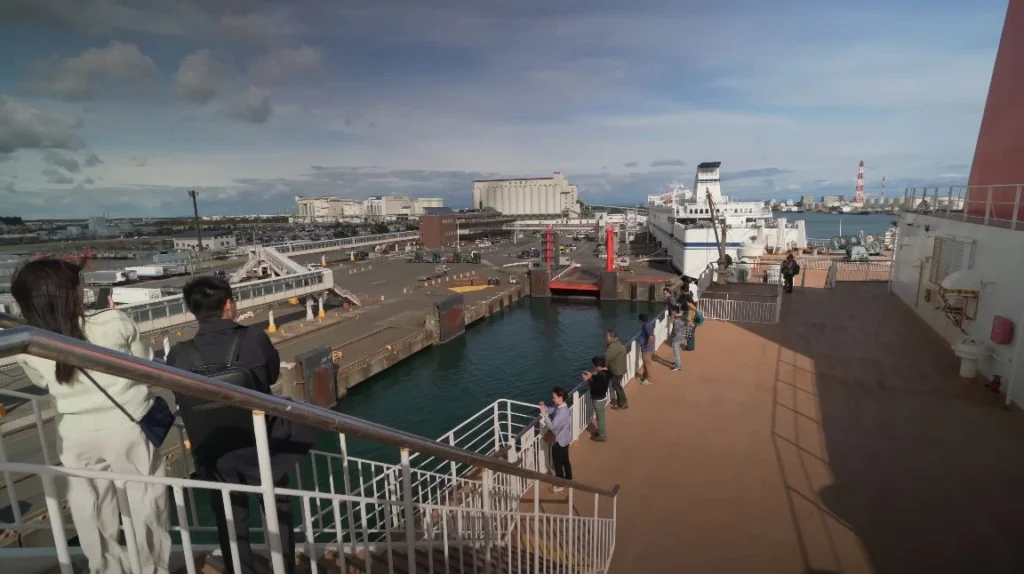
Ferry to… somewhere. I’d stopped caring about destinations by this point. Just showed up at ports and bought tickets to wherever was leaving next. This one might’ve been heading to Tomakomai. Or maybe it was that day trip to one of those tiny islands nobody visits.
The deck was mostly empty except for truck drivers and me. One guy was smoking despite the seventeen NO SMOKING signs. Nobody cared. We’re on a boat in the middle of the ocean—different rules.
Met this Filipino crew member who’d been working Japanese ferries for fifteen years. He missed his kids, showed me approximately 400 photos on his phone. His daughter just graduated nursing school. His son plays basketball. He sends them 70% of his salary every month.
“Worth it?” I asked.
He looked at the water for a long time. “Ask me in ten years.”
Ferry Travel Reality:
- The “economy” seats are just floor space with a tiny cushion.
- Truck drivers have their own secret lounge with better food.
- The instant ramen tastes better on boats (sea air? desperation?).
- If you’re foreign, everyone assumes you’re lost.
- The sunrise from the deck beats any ¥10,000 hotel view.
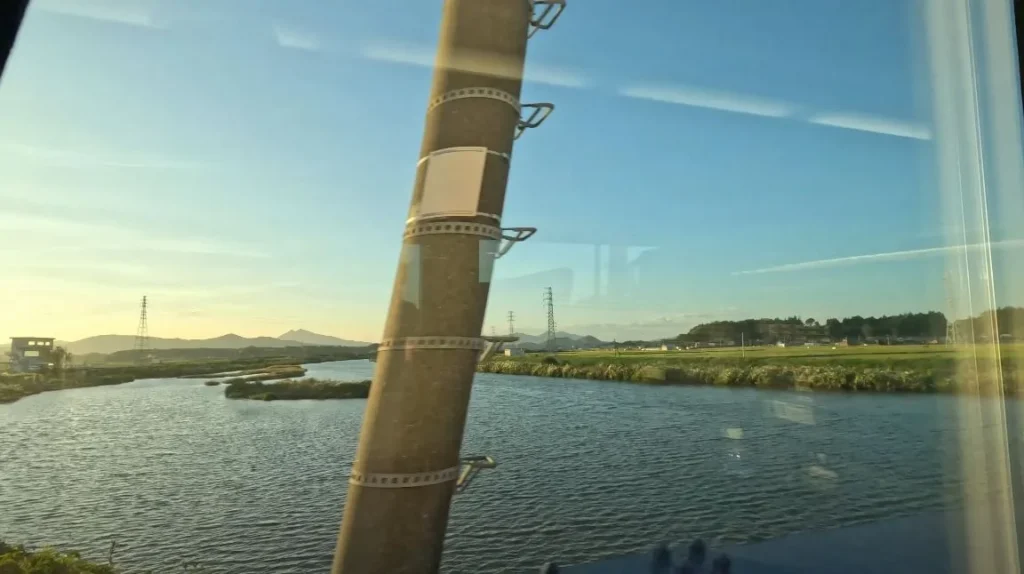
The shinkansen back to Tokyo. That water view? Somewhere around Shizuoka, when Mount Fuji is supposed to appear but didn’t because Fuji is a diva like that. The Japanese businessman next to me had his laptop out, spreadsheet full of numbers that looked important. He fell asleep mid-typing, finger still on the ‘J’ key. His document filled with 47 pages before I nudged him awake.
“Arigato,” he mumbled, deleted everything, went back to sleep.
Peak salaryman energy.
Parks, Peace and Pretending to Be Local
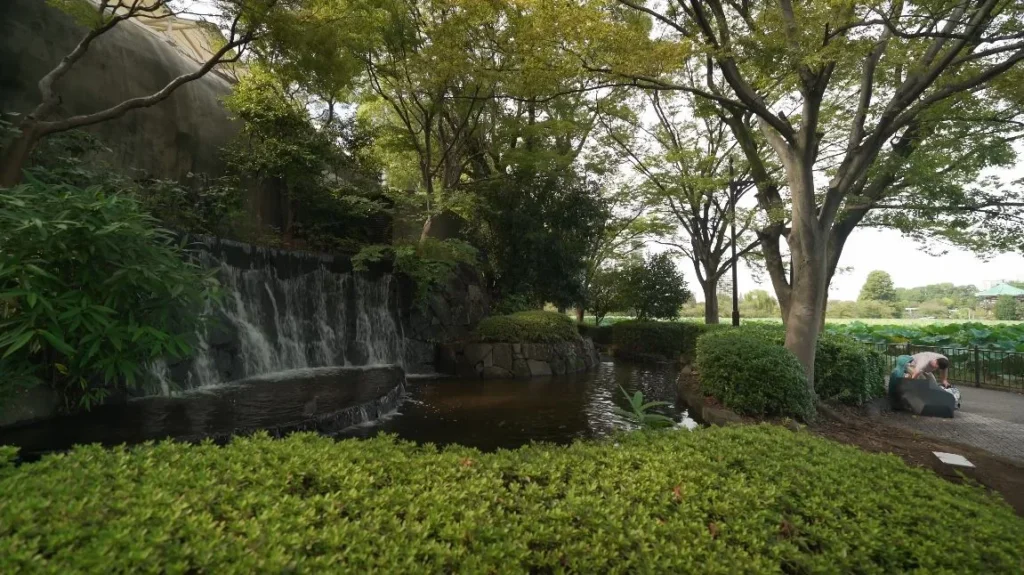
Found this park in Tokyo trying to escape the tourist hordes. No idea which one—Tokyo has approximately nine million parks and they all have water features and elderly people doing tai chi at 6 AM.
That person sitting by the waterfall? They were there when I arrived at 2 PM. Still there when I left at 5. Just… sitting. Watching water fall. Living their best life.
I tried it. Lasted twelve minutes before checking my phone.
City parks in Japan hit different though. You’re surrounded by eight million people but somehow it’s quieter than my suburban neighborhood back home. There’s this unspoken agreement: we’re all here to pretend the city doesn’t exist for thirty minutes.
A kid fell in the pond chasing a pokemon (yes, people still play). His mom didn’t even look up from her book. The kid climbed out, soaking wet and just… kept playing. Different breed of parenting here.
Food Adventures: Round Two
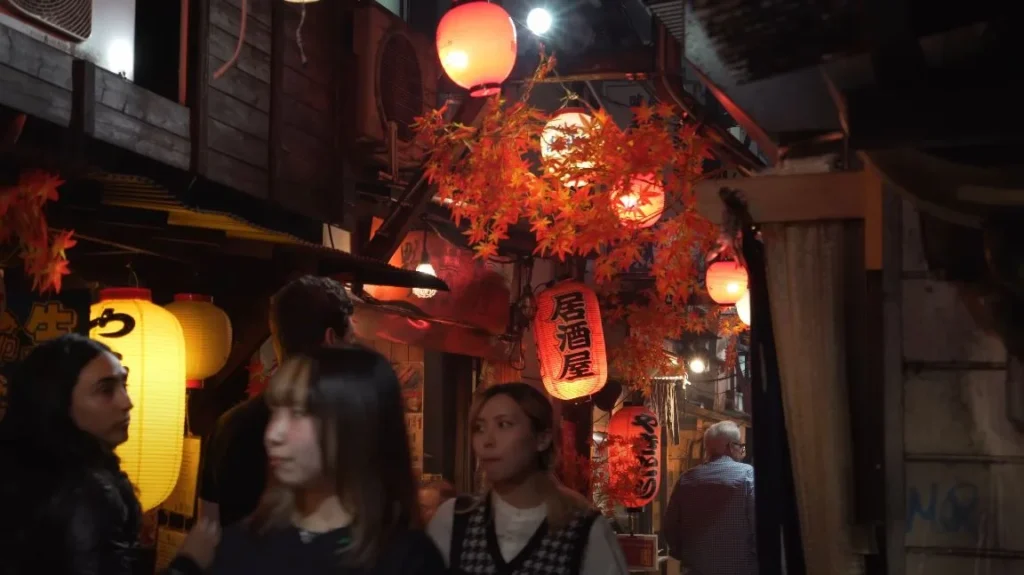
This alley. Autumn had just started creeping in, turning the maples into fire. The lanterns weren’t even lit yet—this was 3 PM—but the shop owners were already drunk. One guy tried to sell me a ¥8,000 bottle of sake. When I declined, he gave me a free sample anyway. Then another. Then another.
I bought the bottle.
Never found that alley again. Tried three times. It’s like it only exists when you’re not looking for it.
My worst food experience? Tried to order yakitori, pointed at what I thought was chicken. Turned out to be chicken hearts. The chef watched me realize this mid-bite. He laughed so hard he gave me free beer. I ate all six hearts out of spite. They weren’t bad, actually. Chewy. Metallic. Like eating sadness.
Best food experience? 3 AM, Lawson convenience store, egg salad sandwich. I don’t care what anyone says about Japanese cuisine—those konbini sandwiches at 3 AM when you’re lost and tired and your feet hurt? That’s real comfort food.
The Konbini Survival Guide Nobody Writes:
| Time | What to Buy | Why |
| 6 AM | Coffee and onigiri | Breakfast of salarymen champions |
| 11 AM | Bento box | Before the good ones disappear |
| 3 PM | Ice cream | Because Japanese soft cream is undefeated |
| 7 PM | Discounted sushi | 30% off and still better than home |
| 11 PM | Strong Zero | Bad decisions in a can |
| 3 AM | Everything | Standards don’t exist at 3 AM |
When Everything Went Wrong (And It Was Perfect)
Last three days. Everything that could go wrong did:
- Missed the last train to my hostel. Slept in a manga cafe.
- Food poisoning from dodgy kushikatsu. 36 hours of hell.
- Typhoon warning. Everything closed.
- Lost my JR pass. ¥29,000 goodbye.
- Phone died. Power bank died. dignity died.
But here’s the thing—
That manga cafe? Met an Australian who’d been living in them for three months. He taught me how to find the ones with shower facilities, which ones have free drinks, how to look busy enough that staff don’t bother you. We spent six hours reading the same manga series, neither of us understanding Japanese, making up our own plot.
The food poisoning? The hostel owner brought me rice porridge every four hours. Didn’t charge me for the extra night when I couldn’t check out. Her daughter practiced English by reading me Japanese fairy tales while I lay there dying. “The demon was vanquished,” she’d say very seriously. Me too, kid. Me too.
The typhoon? Spent it in a underground izakaya with twenty strangers. The owner kept the place open because “where else would we go?” Free drinks after the third hour. Someone brought a guitar. A salaryman sang Whitney Houston. I have video evidence somewhere.
What Three Weeks in Japan Actually Taught Me:
Not the philosophical stuff about harmony and respect you read in travel blogs. The real stuff:
- You haven’t really traveled until you’ve been lost for six hours.
- Language barriers disappear after the second beer.
- The best experiences can’t be planned.
- Sometimes you need to just sit and watch water fall.
- Convenience stores are mankind’s greatest achievement.
- Your feet will hurt. Accept it.
- That couple taking 400 selfies? They’re having fun. Let them.
- Missing the last train isn’t a disaster, it’s an opportunity.
- Japanese toilets will ruin all other toilets forever.
- You’ll leave wanting more.
The night before flying home, I walked through Akihabara again. Same neon, same chaos, same white vans blasting J-pop. But I knew which konbini had the best fried chicken now. Knew to stand on the left side of the escalator. Knew that the tiny bar on the third floor of that sketchy building has the best highballs in Tokyo.
Still couldn’t read anything. Still got lost. But it was my kind of lost now.
The Train Rides That Became Meditation
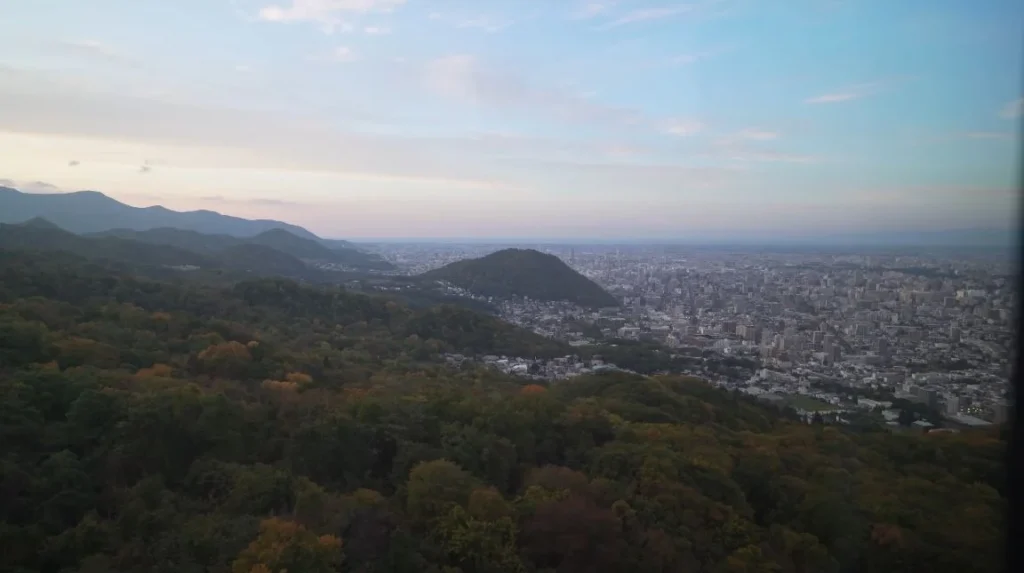
Somewhere near Takayama, or maybe it was on the way to Nikko—I gave up tracking after week two—caught this view from a ropeway that cost more than my daily food budget. But you know what? When you’re hanging in a metal box watching Japan unfold beneath you like someone’s unrolling a painting, ¥3,200 feels like theft.
Met this 85-year-old woman on the ropeway. She makes this trip every month. “My husband proposed here in 1962,” she said. He died ten years ago. She still comes up, has a bentō lunch for two, leaves his portion for the birds.
“They’re getting fat,” she laughed, pointing at the crows.
The autumn colors were just starting—that yellow-green-orange gradient that happens before everything explodes into red. A French photographer next to me kept muttering “Mon Dieu” every thirty seconds. His wife kept elbowing him. The Japanese family across from us said nothing, just watched. Their kid pressed his nose against the glass so hard it left a mark that’s probably still there.
The Transportation Realizations:
Nobody tells you Japanese trains become your therapy:
- Local trains where salarymen sleep standing up (how?).
- That one car that’s always empty (it’s the women-only car, genius).
- Missed connections that lead to better adventures.
- Station bentō that shouldn’t be good but absolutely are.
- The announcer who apologizes when the train is 30 seconds late.
One conductor bowed to an empty train car at the last stop. Full 90-degree bow. Nobody watching but me. That’s when I understood something about this place I still can’t put into words.
Tokyo’s Final Test
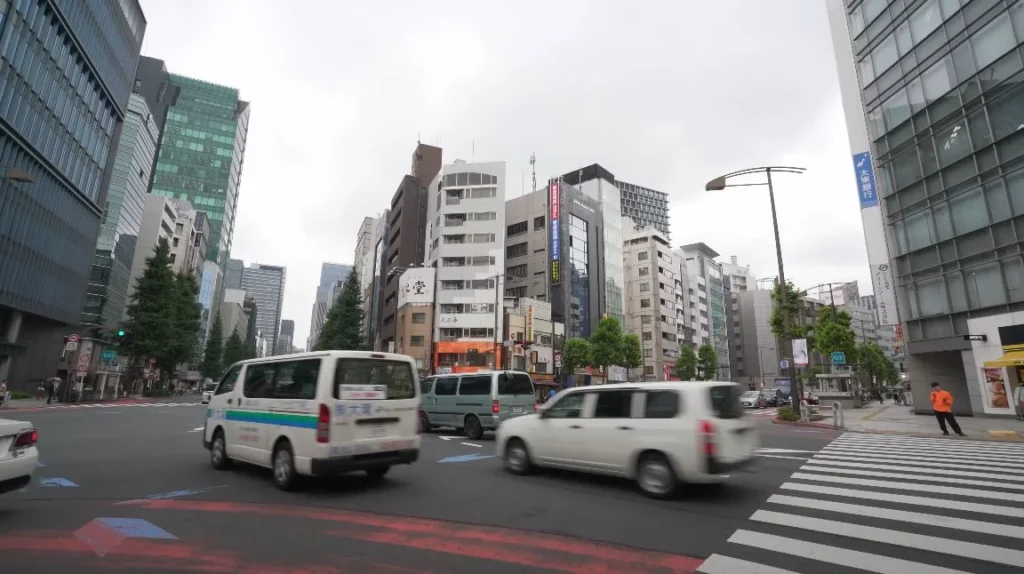
Three days before leaving. Tokyo decided to show me everything at once. This intersection—not Shibuya, not anywhere famous. Just some random crossing where five roads meet because Tokyo’s city planning is what happens when you let five different people draw on the same map.
Stood there for twenty minutes just watching the light cycles. Each phase lets different groups cross. It’s a ballet nobody’s conducting but everyone knows the steps. Except me. I went when the bikes were supposed to go. Nearly got murdered by a grandmother on an electric bike. She dinged her bell at me so aggressively I apologized in three languages.
A street photographer asked if he could take my picture. “You look properly lost,” he said. Thanks? His Instagram has 50K followers apparently. I’m probably famous in some Tokyo street photography circle as “confused foreigner #7,836.”
That One Perfect Night in a Tiny Izakaya
No photo for this one. Some moments your camera can’t catch.
Found it down an alley so narrow I had to walk sideways. No sign, just a dirty curtain and cigarette smoke leaking out. Six seats. Master behind the counter looked like he’d been pickling in his own cigarette smoke since 1975. One menu item changes daily, written on cardboard. You eat what he makes.
That night: grilled fish I couldn’t identify, something with mountain vegetables, soup that might’ve had a hundred ingredients or three. The couple next to me had been coming here for twenty years. They tried to explain the fish to me using phone translation, gave up, just said “good for you!” and we all laughed.
The master poured sake I didn’t order. Free, he indicated. We “talked” for three hours using my twenty words of Japanese, his five words of English and a lot of pointing. He showed me photos from the 1980s—same counter, same seats, younger him with what looked like the Yakuza but he insisted were “just friends with style.”
Bill came to ¥1,500. I tried to pay more. He looked actually offended.
Never found it again. Went back to the same alley twice. Either I’m insane or it only exists when you need it.
The Convenience Store Clerk Who Saved My Life
2 AM. Shin-Okubo. Food poisoning round two (that kushikatsu place can burn). Stumbled into FamilyMart looking like death’s intern. The clerk—maybe 19, definitely didn’t get paid enough for this—took one look at me and just started gathering things. Sports drink. Rice porridge. Those little plum things that taste like sadness but fix your stomach. Anti-nausea medication I didn’t know convenience stores sold.
Rang it all up, then walked me to the eating area, made me sit down, opened the porridge for me. Came back every five minutes to check I hadn’t died. His English was perfect but he pretended it wasn’t until I was feeling better, then suddenly: “Yo, you good now? You looked rough as hell when you walked in.“
His name was Ken. He was studying robotics. Working nights to pay for university. He wanted to design prosthetics. We talked until 5 AM when his shift ended. He walked me to the station, made sure I got on the right train.
Ken, if you’re reading this: you’re a legend.
Why Mount Fuji Is Overrated
Never climbed it. Don’t care. Saw it from the train on a clear day and honestly? It’s just a triangle. A pretty triangle, sure, but social media had me expecting a religious experience. It’s a mountain. Japan has hundreds of them.
You know what’s better? That unnamed hill I climbed wrong way up because I can’t read trail signs. Found a shrine at the top that maybe twelve people visit a year. The donation box had spider webs in it. An old man was up there feeding cats—twenty of them, all different colors, living their best shrine cat lives.
He shared his onigiri with me and the cats. We didn’t speak each other’s languages but spent two hours up there. He’d point at a cat, say its name, I’d repeat it badly, he’d laugh. The cats didn’t care. They owned that mountain and we were just visiting.
That’s the Japan nobody Instagrams.
The Things That Actually Matter:
After three weeks, here’s what stuck:
- The salary man who ran three blocks to return ¥100 I dropped.
- The ramen that made me cry (too much emotion or too much chili oil?).
- The hostel roommate who left origami on everyone’s pillow.
- The businessman sleeping in the park in his suit at lunch.
- The way everyone backs into parking spots (why?).
- That one vending machine selling corn soup (surprisingly good).
- The junior high kids who practiced English by reading me anime plots.
- The silence on trains despite 200 people in one car.
- The taxi door that opens by itself and blows your mind every time.
Going Home But Not Really
Last morning. Same view, different eyes. The city sprawled out like it always did, but now I knew that somewhere down there was Ken’s FamilyMart, that invisible izakaya, the alley with autumn lanterns that might not exist, the park where water falls forever.
Passport control. The officer looked at my entry stamp, looked at me, said “long time” in English. Yeah, buddy. Not long enough.
On the plane, the Japanese grandmother next to me noticed I was editing photos. She looked through all 3,847 of them with me. Every single one. Pointed at ones she liked, made disgusted faces at my food photos, laughed at my failed attempts at sunset shots. When we landed in San Francisco, she patted my hand and said something in Japanese. The flight attendant translated: “She says you understood correctly.”
I still don’t know what I understood.
But I kept my ticket stub. And sometimes at 3 AM when I can’t sleep, I look at konbini food on Instagram and plan my return.
Because here’s the truth nobody tells you: Japan doesn’t change you. It just shows you who you already were, reflected in neon puddles and train windows and the eyes of station masters who bow to empty trains.
You leave. But you never really leave.
Final Stats From Three Weeks of Chaos:
- Steps walked: 847,293
- Trains missed: 17
- Trains caught by running: 11
- Times I ate rice: 127
- New Japanese words learned: 43
- New Japanese words retained: 8
- Vending machine drinks tried: 67
- Favorites: Pocari Sweat, Boss Coffee, that corn soup
- Money spent on things I didn’t need: ¥47,000
- Regrets about that: 0
- Photos taken: 3,847
- Photos worth keeping: maybe 100
- Memories that photos can’t capture: infinite
The Japan you plan to visit doesn’t exist. The Japan you actually visit is weirder, harder, more frustrating and absolutely perfect in its imperfection. It’s missed trains and wrong orders and getting lost and finding yourself in places guidebooks don’t mention.
Go. Get lost. Eat the convenience store egg sandwich at 3 AM. Miss the last train. Bow incorrectly. Order the wrong thing.
Trust me. That’s where the real Japan lives.

